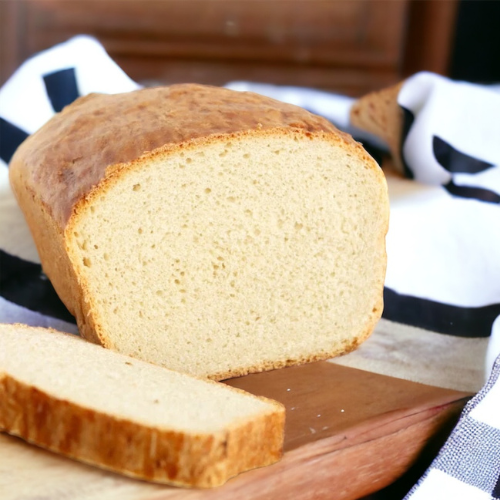Gluten Free Flour Mix
For anyone navigating the world of gluten-free baking, finding the right flour mix can make all the difference. Many store-bought options are pricey, and some contain additives or flavors that may not suit every recipe. Enter this easy homemade gluten-free flour mix! Made with just three simple ingredients, it’s a versatile and budget-friendly alternative to traditional flour.
Why Make Your Own Gluten-Free Flour Mix?
Homemade gluten-free flour mix offers:
- Control Over Ingredients: Ensure your blend is free from allergens, additives, or preservatives.
- Cost Savings: Store-bought gluten-free flours can be expensive, but this DIY mix keeps things affordable.
- Versatility: Perfect for everything from cakes to cookies and quick breads.
Ingredients for Gluten-Free Flour Mix
This recipe yields 3 cups of gluten-free flour mix. Scale it up for larger batches!
- 2 cups white rice flour
- 1/3 cup tapioca flour
- 2/3 cup potato starch (not plain potato flour)
How to Make Gluten-Free Flour Mix
- Combine Ingredients:
In a large mixing bowl, add the white rice flour, tapioca flour, and potato starch. - Blend Thoroughly:
Use a whisk or sift the ingredients together to ensure they’re evenly combined. - Store Properly:
Transfer the mixture to an airtight container and store it in a cool, dry place, just like regular flour.
How to Use This
This mix can be used as a 1:1 substitute for white wheat flour in many recipes. It works beautifully in:
- Muffins
- Pancakes
- Cookies
- Quick breads
For yeast-based recipes like bread or pizza dough, you may need to add a binding agent like xanthan gum or guar gum for elasticity.
Tips for Success
- Choose the Right Ingredients: Ensure you’re using potato starch and not potato flour—they’re very different!
- Experiment with Recipes: Gluten-free flours can vary in how they interact with liquids, so don’t be afraid to tweak recipes to get the perfect texture.
- Label Your Mix: Clearly mark the container as gluten-free to avoid confusion in the kitchen.
Why This Blend Works
The combination of white rice flour, tapioca flour, and potato starch strikes the perfect balance for gluten-free baking:
- White Rice Flour: Adds a mild flavor and soft texture.
- Tapioca Flour: Provides a chewy, elastic quality and helps with browning.
- Potato Starch: Ensures a light and airy consistency in baked goods.
Wrap-Up
This simple mix is a game-changer for anyone avoiding gluten. It’s easy to prepare, versatile, and delivers excellent results in a variety of baked goods. By making your own mix, you’ll enjoy the freedom to bake your favorite recipes without worrying about gluten or overspending on store-bought options.
So grab a mixing bowl, whip up a batch, and start creating gluten-free treats your whole family will love. Happy baking! 🧁🍞
Did you try this recipe? Let me know in the comments how it turned out, or tag me on social media with your creations! Looking for more gluten-free inspiration? Check out my Gluten-Free Snickerdoodle Cookies and Gluten-Free Buttermilk Biscuits for more ideas.

Gluten Free Flour Mix
Ingredients
- 2 cups white rice flour
- 1/3 cup tapioca flour
- 2/3 cup potato starch flour not plain potato flour
Instructions
- Combine all into a bowl or container, blending well. Store as you would any flour. Use as a substitute for white wheat flour.








